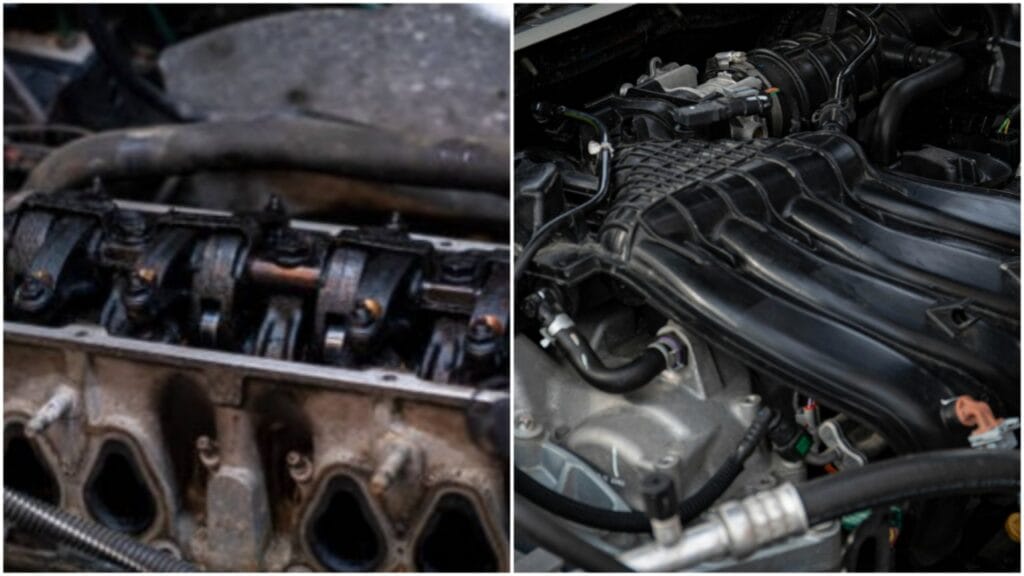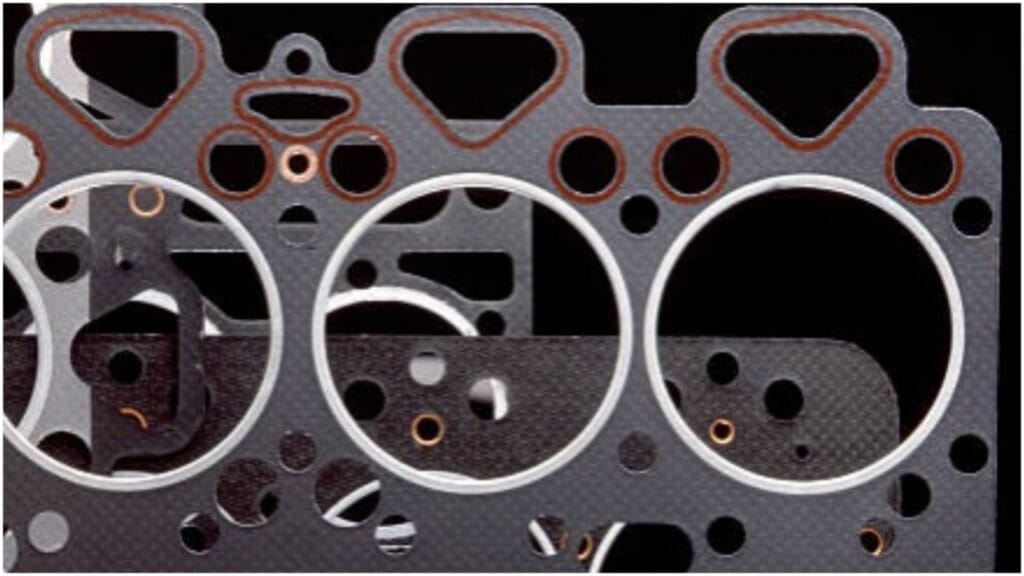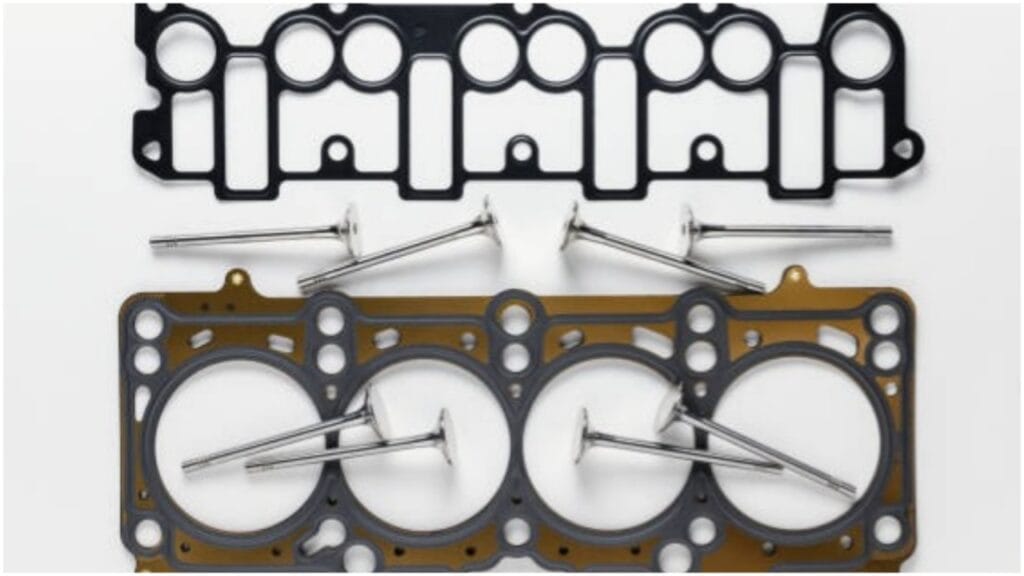Depending on the vehicle, replacing a valve cover gasket typically takes 2-4 hours. Depending on the car’s condition, it may take more or less time. You can repair it by doing some work, but you must be careful. Disconnect the battery for safety. Locate the valve cover and remove any parts that block access, such as air intake hoses or ignition coils.
Use a wrench to remove the bolts holding the valve cover in place. Pay attention to how the bolts were installed. Once the cover is off, carefully remove the old gasket. Clean the valve cover and engine block surfaces to remove oil or debris. Inspect the valve cover for damage and replace it if needed.
Install the new gasket, making sure it fits properly. Depending on the type of gasket, you may apply a thin layer of gasket sealer. Reinstall the valve cover, tightening the bolts evenly in a crisscross pattern. Finally, reconnect the battery and start the engine. After running the engine for a few minutes, check for leaks. If there are no leaks, the replacement is complete.
This straightforward process can vary depending on the vehicle’s make and model. If you still need help understanding the matter, I will explain it in more detail for your convenience. Just keep reading carefully.
Why is it important to do this?
The valve cover gasket sits between the valve cover and the engine block. Its main job? Prevent oil from leaking out of the engine. Without it, oil could spill onto the hot engine parts, causing everything from smoking and smell to catastrophic engine damage.
And over time, heat, pressure, and engine vibrations can cause this little gasket to wear out, crack, or get brittle. The symptoms you will see if this happens are oil leaks, burning smells, or even a decrease in engine performance. So it is much more important to repair it.
What Should Be Done When Replacing the Valve Cover Gasket?

Now, you can start working as I suggested; before doing this, you should look at the entire place and be careful to avoid making any mistakes. And first, gather the necessary equipment. You’ll need:
- A socket wrench set (metric and standard sizes)
- Torque wrench
- screwdrivers
- Gasket scraper or putty knife
- Gasket sealant (if necessary)
- A new valve cover gasket (obviously)
- A drain pan or towels for any oil spills
- A gloves
- Also, you’ll need a replacement gasket
Now Shut the Engine Off and Let It Cool
First, if your engine has been running, let it cool down. This isn’t just for comfort; it’s for safety. Trying to replace a valve cover gasket on a hot engine is like trying to make spaghetti in a burning pot. Lay down some protective covers if needed, and keep the area around your engine clean.
Now, disconnect the battery before you start unscrewing bolts and moving parts. This prevents accidental electrical mishaps, especially when working around sensitive components.
Next, you’ll want to remove any components in the way. This could include things like air intakes and spark plug wires. Before removing them, be careful where you are removing the stump. Be sure to keep track of where everything goes.
Time to Remove the Old Valve Cover
Unscrew the bolts holding the valve cover in place. Some require a bit of force, especially if the gasket has been in there for a while and things are a little stuck. That’s where the socket wrench comes in handy.
Sometimes, the cover won’t want to budge, so gently tap it with a rubber mallet to loosen it up. Don’t go overboard; the goal is to break the seal, not damage the cover. Once it’s loose, carefully lift the valve cover off.
You’ll likely find that oil has seeped into areas it shouldn’t have, and those places need to be cleaned well. Inspecting the area around the cylinder head quickly is a good idea to see if oil buildup or debris could interfere with the new gasket.
Cleaning
Cleaning is the most crucial part of this process. Before installing the new gasket, you need to remove all the old gasket material and oil residue.
Use the gasket scraper or putty knife to remove any old remnants of the old gasket. You don’t want to scratch or damage the cylinder head surface.
After scraping off the old material, wipe the surface with a clean rag soaked in brake cleaner or a degreaser. This will ensure that there is no leftover oil or debris. Now, you are ready to install the new gasket.
Install the New Gasket
You have to pay close attention here. Ensure the new gasket fits snugly into the groove on the valve cover. Some gaskets come with a little adhesive to help keep them in place. If that’s the case, you can apply it to the gasket or the valve cover, depending on the manufacturer’s instructions.
Now, carefully place the valve cover back onto the cylinder head. The gasket should stay in place but don’t force it. It should sit flush against the head, and you’ll be able to feel it.
Tighten Everything Securely
You have replaced it properly. Now, reinstall the bolts in the same way you removed them, making sure the bolts are not loose, and don’t apply too much pressure, as too much pressure can cause the gasket to burst, so be careful about it. This ensures even pressure across the entire gasket. Use a torque wrench to tighten the valve cover bolts to the specified torque.
Reassemble and Test
Once the valve cover is in place and bolted down, carefully install the air intakes, spark plug wires, etc., that you removed. Check everything carefully to make sure everything is reconnected correctly.
Before you fire up the engine, give it a quick once-over? Make sure you haven’t left any tools behind, and check for any signs of oil on the gasket. If everything looks good, reconnect the battery.
Now, start the engine and let it run for a few minutes. This will help the new gasket settle into place. Check for any signs of leaks. If you notice anything unusual, it’s better to catch it now than after driving it for days.
What is the lifespan of a valve cover gasket?

The lifespan of a valve cover gasket typically ranges from 50,000 to 100,000 miles. However, this can vary based on the vehicle’s make, model, and driving conditions. Over time, the gasket can wear out due to heat, oil exposure, and engine vibrations.
When the gasket deteriorates, it may leak oil, leading to engine damage if not addressed. Some signs of a failing valve cover gasket include oil leaks around the valve cover, a burning oil smell, or engine misfires due to oil contaminating the spark plugs.
Regular maintenance, such as checking oil levels and looking for leaks, can help extend the gasket’s lifespan. Extreme driving conditions, like heavy towing or high-temperature climates, may shorten its life. While replacing the valve cover gasket is a relatively straightforward repair, it’s important to address any leaks quickly to prevent further engine issues.
Is the valve cover gasket leak on the alternator?

A valve cover gasket leak near the alternator can be a severe issue. When the gasket leaks, oil can drip down onto the engine components. If it spills onto the alternator, it could cause several problems.
Alternators rely on electrical connections to function properly, and oil can damage those connections or cause the alternator to overheat. In some cases, the oil can even cause the alternator’s bearings to fail, leading to costly repairs.
If you notice oil around your alternator or any unusual symptoms, such as electrical issues, strange smells, or flickering lights, it’s essential to quickly address the valve cover gasket leak.
FAQ’s
How long does it take to replace a valve cover gasket?
Replacing a valve cover gasket usually takes one to three hours, depending on your vehicle and experience level.
For a simple four-cylinder engine, the job is relatively quick and straightforward. You’ll need to remove the valve cover, clean off the old gasket material, and install the new gasket carefully.
If you’re working on a V6 or V8 engine, it might take longer. These engines often have more components to remove, like ignition coils or intake manifolds, to access the valve cover.
The time can also vary based on how easily bolts or parts come off. Rust or tight spaces slow things down. If you’re a DIYer, planning for extra time is wise, especially if this is your first attempt.
Replacing the gasket is essential to stopping oil leaks and protecting the engine. Take your time to ensure the new gasket is seated correctly to avoid future leaks.
How long does a valve cover gasket last?
A valve cover gasket typically lasts between 50,000 and 100,000 miles, which can vary depending on the vehicle and driving conditions.
Factors like engine heat, oil exposure, and vibrations can cause the gasket to degrade over time. When the gasket wears out, it may begin to leak oil. This can lead to engine damage if not fixed.
Regular maintenance, such as checking for leaks and maintaining proper oil levels, can help extend its lifespan. Extreme driving conditions, like towing heavy loads or driving in very hot climates, can also shorten the gasket’s life.
If your vehicle has reached the higher end of the gasket’s lifespan or shows signs of leaks, it’s a good idea to have it inspected.
Valve cover gasket leak repair cost?
The cost to repair a valve cover gasket leak typically ranges from $150 to $600, depending on the make and model of your vehicle. The price can vary based on labor rates, the location of the repair shop, and whether you use aftermarket or OEM (original equipment manufacturer) parts.
Labor is the highest cost in most cases since accessing the valve cover gasket can require removing other engine components. Labor costs can range from $75 to $150 per hour, and the repair can take anywhere from 2 to 4 hours.
The valve cover gasket parts are relatively inexpensive, typically costing between $20 and $80. The price may rise if additional components like seals, grommets, or gaskets are needed. Further cleaning may add to the cost of the leak, which has caused oil to drip onto other engine parts.
The repair may be covered if your car is under warranty or has a recall for valve cover gasket issues. It’s important to promptly address a valve cover gasket leak, as ignoring it can lead to more serious engine problems, such as engine misfires or oil contamination.
Can a leaking valve cover gasket cause a fire?
Yes, a leaking valve cover gasket can potentially cause a fire, though it’s relatively rare. When the gasket fails, oil can leak onto hot engine parts, such as the exhaust manifold or engine block.
If the oil comes into contact with these heated surfaces, it can ignite, leading to a fire. This risk is higher if the oil leak is significant or the engine has been running for a long time without addressing the problem.
In addition to the fire risk, the leaking oil can damage other engine components and lead to poor engine performance, such as misfires or overheating.
If you notice oil leaking from the valve cover or smell burning oil, it’s crucial to have the issue repaired quickly. Ignoring a leaking valve cover gasket can lead to serious engine damage or even a fire in extreme cases.
Should I replace the valve cover or just the gasket?
In most cases, you should only replace the valve cover gasket, not the entire valve cover. The valve cover is typically made of durable material like metal or plastic and only sometimes needs replacement unless cracked, warped, or severely damaged.
The gasket is a soft material that wears out over time due to heat, oil exposure, and engine vibrations, leading to leaks.
If the valve cover is in good condition and shows no signs of damage, replacing just the gasket is usually enough to fix the issue.
This repair is more cost-effective and relatively simple. Replacing the valve cover with the gasket may be necessary if it is cracked, bent, or excessively worn.
When should I replace my valve cover gasket?
It will help if you replace your valve cover gasket when it leaks or shows signs of wear. Common indicators include oil spots around the valve cover, a burning smell, or engine misfires.
If oil leaks onto hot engine parts, it can cause damage or even lead to a fire risk, so it’s crucial to address the issue early.
If the engine is making a “ticking” noise or misfiring, it could be because oil contaminates the spark plugs. Valve cover gaskets generally last between 50,000 and 100,000 miles, but factors like heat, driving conditions, and engine type can affect their lifespan.
If your vehicle has high mileage or you’ve had the gasket for a long time, it’s a good idea to have it inspected, even if there are no obvious signs of leakage. Regular oil changes and maintenance can help extend the gasket’s lifespan.
Conclusion
Replacing a valve cover gasket is simple but requires patience and attention to detail. The key is in the prep work—cleaning the surfaces thoroughly, ensuring the gasket is seated correctly, and tightening everything to the correct torque specification. By now, you probably understand how long it takes to replace a gasket.

